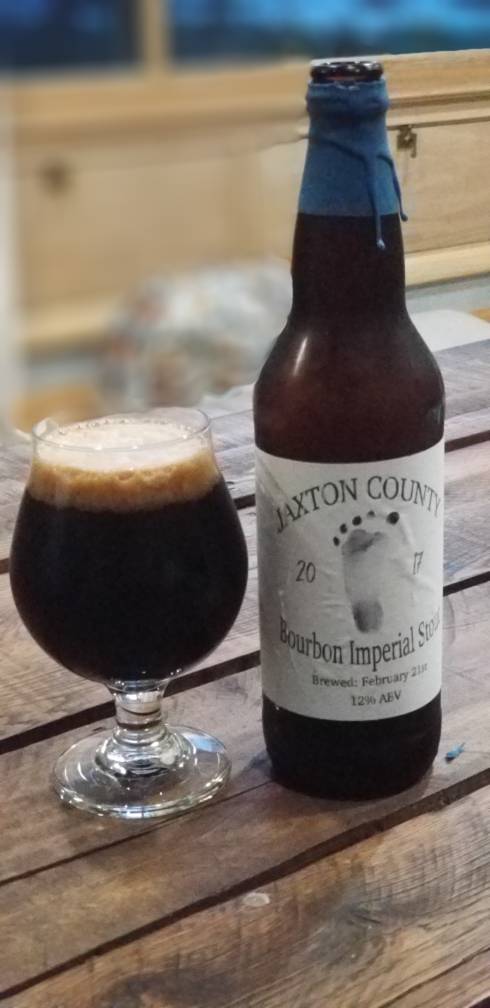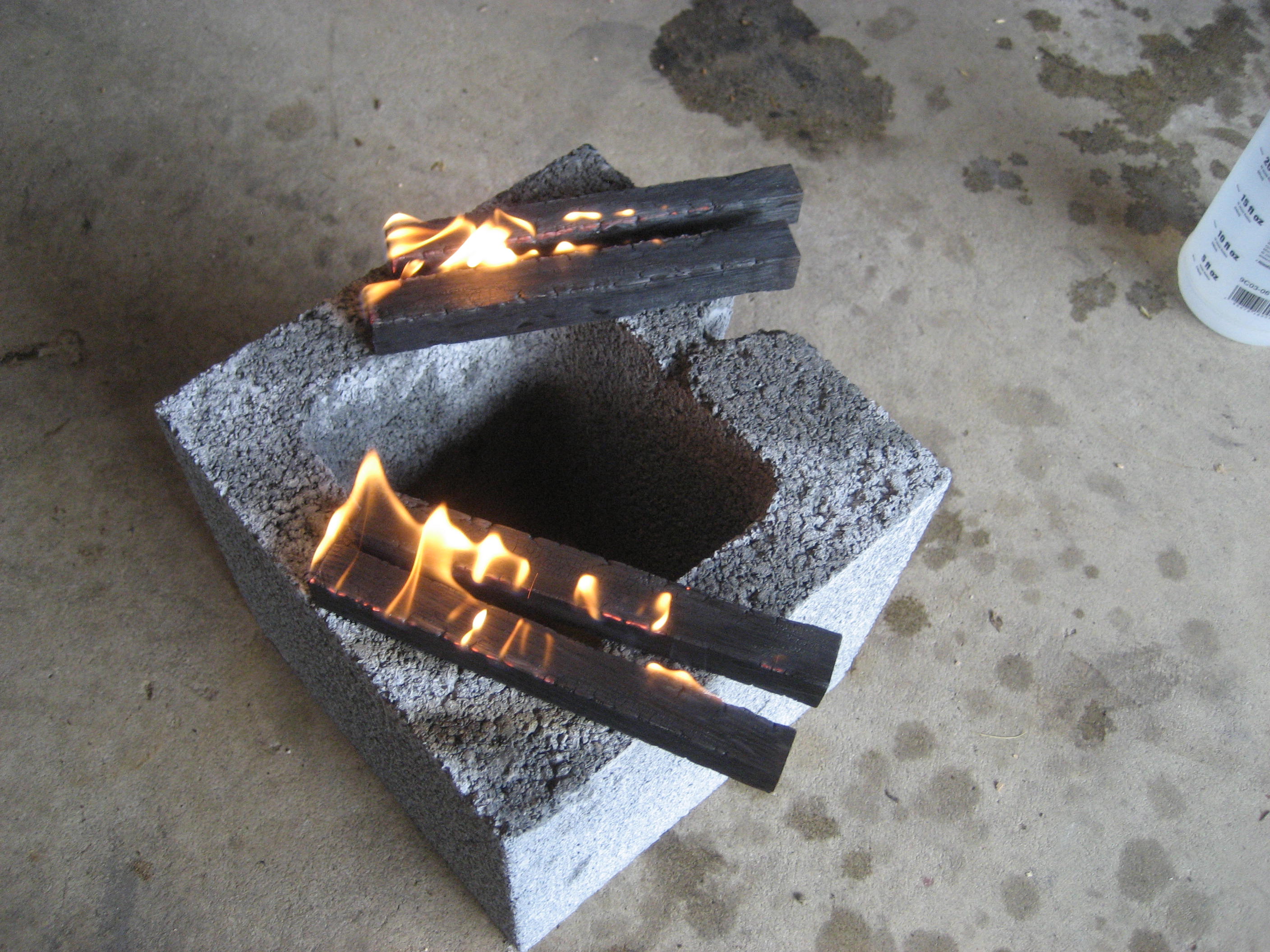- Joined
- Aug 8, 2017
- Messages
- 1,509
- Reaction score
- 1,779
I have my keg aging at room temp 68-78deg. Gets hot in MS in the summer and we cut the air up when not home. My version came in at 10.5%. Would this beer be better stored at cooler temps?

I brewed this 8 days ago and had a pretty good brew day. Don't have any photos but still wanted to participate and add to the post for future brewers. Took a gravity reading on day 7 and I was already at 1.034!!! This puts me around 10.3% ABV already and I suspect I'll get a couple more points still
Went with the following numbers:
Boiled for 120 minutes to get 4 gallons into the fermenter, hoping for at least 3 gallons to keg. I did this due to volume limitations. I had to add DME at flameout to hit my OG of 1.112
12 lbs 3.0 oz Pale 2-Row (Great Western) (2.0 SRM) 61.1 %
3 lbs 14.0 oz Munich II (Weyermann) (9.0 SRM) 19.4 %
13.0 oz Caramel Malt - 60L (Briess) (60.0 SRM) 4.1 %
13.0 oz Chocolate (Briess) (350.0 SRM) 4.1 %
13.0 oz Roasted Barley (Briess) (300.0 SRM) 4.1 %
7.0 oz De-Bittered Black Malt (Dingemans) (550.0 SRM) 2.2 %
1 lbs DME Golden Light (Briess) [Boil for 0 min](4.0 SRM) Dry Extract 10 5.0 %
4.00 oz Willamette (3.6)(2016) [3.60 %] - Boil 60.0 min 57.3 IBUs
1.00 oz Willamette (3.6)(2016) [3.60 %] - Boil 10.0 min 5.5 IBUs
3.0 pkg Safale American Ale (DCL/Fermentis #US-05) pitched after aerating with pure oxygen for 120 seconds.
For the oak/bourbon, I've had 16 ounces of Buffalo Trace sitting on 1.5 oz charred Jack Daniels oak chips for two months. I'll throw a percentage of the oak/bourbon into the keg when I secondary this in the keg.
Haven't decided yet if I will bottle condition or Keg this to serve.
I used three packs of US-05 and mine went from 1.110 - 1.030 after a month in the primary. I have mine in the keg at room temp with two oak spirals that soaked in 8oz of Jim Beam Devils cut for a month. The hydro sample tasted pretty strong charred wood flavor. I’m planning on letting this beer age in the keg until Oct/Nov (6 months) before tapping.
I have my keg aging at room temp 68-78deg. Gets hot in MS in the summer and we cut the air up when not home. My version came in at 10.5%. Would this beer be better stored at cooler temps?
I’m a Newb here also!
On a beer this big that you plan to age for a few years, always remember every gravity check is introducing oxygen! My thought when I read your post is damn you bugged the hell out of this beer. I personally wouldn’t check gravity until 3-4 weeks.
I let mine go a month in the carboy before racking into a keg for aging. Once in a keg I put at room temp for another 30 days before moving to the keeper until Oct/Nov.
I’m curious why your adding dry yeast?

To get the great bourbon flavor i aged 1 year in a corney keg with oak cubes (that were soaked in bourbon) AND added about 6 oz of bourbon.Update: Happy with my version! The smoke flavor was intense but seems to really be settling down. Still green but not really getting much bourbon flavor. Has been in the keg since 5/6/18.
Anyone add bourbon into keg?
View attachment 578399

Attempting this beer on Monday.
I have a 10gal mash tun and an 8 gal kettle.
using 38lbs of grain and plan to split it up into two portions. I'll heat up strike water and transfer to MLT. Then i'll heat up more strike water and keep in kettle. Going to mash in the MLT with 6.6gal water/19lbs of grain and then at the same time, do BIAB with the same amount of water and grain in my kettle. Doing a 60min mash, I'll pull the bag and start the boil the vorlauf the MLT and transfer some to the kettle and the excess to the HLT. I'll add from the HLT as volume in the kettle allows.
Planning on doing a 4 hour boil. (Maybe less, should have decent efficiency since the mash thickness isn't too over the top).
Going to oxygenate, and pitch a big starter of WLP007 and then once the gravity drops a bit I'll add two packs of Safale US-05 (might oxygenate after the first 12 hours of fermentation)
Definitely like the idea of aging in a corny. Makes it easy for oak and other additions and since CO2 is heavier than air you should have protection from oxidation when you open it up as the CO2 won't dissipate out immediately.
Anything I'm doing make zero sense? Any advice would be appreciated!
Update: Happy with my version! The smoke flavor was intense but seems to really be settling down. Still green but not really getting much bourbon flavor. Has been in the keg since 5/6/18.
Anyone add bourbon into keg?
View attachment 578399
I've brewed the following recipe (from another site) twice and planning my third this weekend. I bump up the grain ratios and shoot for ~1.135 using two separate mashes and a 4-5 hour boil. Tons of oxygen, huge yeast starter. Both times its gotten down to about 1.035 or 1.040 and ends up around 14% to 14.5% after adding bourbon.
I do primary for 1 month and then rack onto medium toast American oak cubes for 9-12 months. I've been using 0.25 oz/gal oak cubes and boiling them in water for a few minutes first to remove the harsh tannins. I've been happy with the results. My first batch I just let the oak & bourbon shine. My second batch I used oak, apple brandy, vanilla and cinnamon. This is a really great base for experimenting with different flavors.
This time I'm trying something different... I took the same amount of oak cubes and charred them completely black and have been soaking them in bourbon for a few months, taking it in and out of the fridge so the wood soaks up the bourbon. I'll discard the bourbon and add the cubes for 9-12 months and then add more bourbon to taste.
Grain Bill:
18.25 lb 2-Row
5.75 lb Munich (10L)
1.25 lb caramel/crystal 60L
1.25 lb Chocolate Malt
1.25 lb Roasted Barley
.75 lb Black Printz (Debittered Black Malt)
Dark Liquid Malt Extract (if pre-boil gravity missed) at 60 min
Hop Bill:
50 IBU Magnum (approx 1.5 oz) at 60 min
10 IBU Willamette (approx 1 oz) at 30 min
1 oz Willamette at flame out
So anteater8, odd question. How “thick” is this version? One thing I love about BCS is just how heavy it is. Also, in Portland, are you in the OBC?
Good question... I'd say mine is about the same viscosity as the majority of barrel aged stouts, but maybe slightly less than BCBS. However, when I'm brewing this style I'm usually more concerned with making sure the FG isn't too high. I'll actually add a bit of table sugar on day 2 or so to give the fermentation a boost, and to up the ABV if I missed my OG. In any case, its definitely "thick" and right where I personally want it.
I am in OBC but rarely attend meetings.








I've brewed this recipe 3 or 4 times. It always came out well but I made a critical mistake every time.
For oak aging I would rack to secondary, add oak cubes, and leave for 9 to 12 months. The seasonal change in temperature would draw air in through the airlock. I didn't put it together at the time but the beers came out with varying degrees of oxidization. One still scored a 37 or 38, another scored in the 20s. In general the big bold roasty flavors were dulled and just didn't meld and pop like that should have. I can only imagine how good it would have been otherwise.
Seems very obvious to me now, but anyone planning to age for an extended period of time should do so with a solid bung, co2 filled balloon attached, or ideally in a purged keg.
I aged in a purged keg. Made it easy to sample as the aging progressed. I felt like it really only needed the oak for about 4 weeks, so I aged w/o for about 6 months. Extremely tasty beer. I still have a couple bottles left.
The brewers are very helpful and looked over my recipe and gave me changes during the class. They were very open with any questions about making it at home.
What were the recommendations? Care to post the recipe?
Sorry my app wasn't working for the past week...this is what I came up with View attachment 668100
Status update from Posts #271 and #286:
I have a new batch going (see blog post) which I hope will get a bit closer. Some changes from last time:
View attachment 619984
- BCBS has a much sharper whiskey character than my version. I suspect this could be due to the strength of alcohol in the wood. Whiskey is typically aged around 60% ABV while the packaged product is watered down to around 40%. Aging my oak in Makers Mark (45% ABV) was not a good approximation for BCBS which goes into barrels containing 60%+ strength spirit. To address this I have been aging 6 oz of oak in Everclear which I watered down to ~63%. I am going to use this for aging. I'll start out with 4 oz like last year and increase if needed.
- Whiskey is aged in warehouses which are exposed to significant temperature variation. This creates pressure differentials in the barrel which drives spirit into and out of the oak and helps extract flavor. BCBS is aged in a non-climate controlled warehouse to cause the beer to be pushed into the oak in the same way. Last year I started out aging the beer in the coolish basement and found that flavor extraction from the oak wasn't coming along very quickly. I then moved into a warmer part of the house and found that the contribution of the oak increased. This year I plan to age the beer in my non-climate controlled attic to see if that causes more flavor to be drawn out. I'll age in a bucket fermenter like last year. It was able to withstand quite a bit of pressure which I wouldn't be comfortable putting a glass carboy under. I'll switch to a hard bung this year compared with a vented bung for my last batch to try to promote more pressure.


I brewed a BCBS inspired brew in mid-August, and just pulled it out of the barrel tonight.
I transferred it to a keg for carbonation, and will bottle it this weekend. The sample I pulled has be very surprised....HUGE bourbon character
So do you like the taste of your version better than the original?
Enter your email address to join: